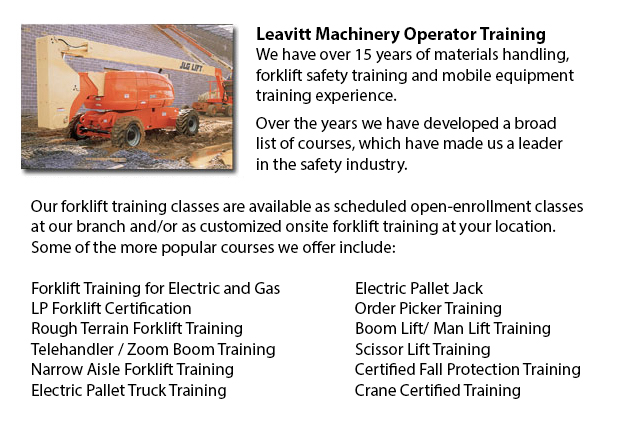
Prince Albert Boom Lift Certification - The use o elevated work platforms allow for maintenance operations and work to be done at elevated work heights which were otherwise unreachable. Workers making use of scissor lifts and boom lifts could be taught how to safely operate these machines by receiving boom lift certification training.
Despite the range in lift style, applications and site conditions, all lifts have the possibility for death or serious injury when operated unsafely. Electrocution, falls, tip-overs and crushed body parts could be the unfortunate result of incorrect operating procedures.
In order to prevent aerial lift accidents, people must be qualified to be able to train workers in operating the specific kind of aerial lift they would be using. Controls should be easily accessible beside or in the platform of boom lifts made use of for carrying workers. Aerial lifts must not be be modified without the express permission of other recognized entity or the manufacturer. If you are renting a lift, make sure that it is maintained properly. Before utilizing, controls and safety devices need to be checked to ensure they are functioning correctly.
Operational safety procedures are important in preventing incidents. Operators should not drive an aerial lift with an extended lift (though some are designed to be driven with an extended lift). Set outriggers, if available. Always set brakes. Avoid slopes, but when necessary make use of wheel chocks on slopes which do not go over the manufacturer's slope limitations. Follow load and weight limits of the manufacturer. When standing on the platform of boom lifts, utilize full-body harnesses or a safety belt with a two-foot lanyard tied to the boom or basket. Fall protection is not necessary for scissor lifts which have guardrails. Never sit or climb on guardrails.
This course includes the following topics: safety tips to prevent a tip-over; training and certification; slopes and surface conditions; inspecting the travel path & work area; other guidelines for maintaining stability; stability factors; leverage; weight capacity; pre-operational inspection; testing control functions; mounting a vehicle; safe operating practices; overhead obstacles and power lines; safe driving procedures; making use of lanyards and harness; PPE and fall protection; and avoid falling from platforms.
When successful, the trained worker would know the following: authorization and training procedures; pre-operational check procedures; factors affecting the stability of scissor and boom lifts; how to avoid tip-overs; how to use PPE, how to use the testing control functions and strategies to avoid falls.
-
Prince Albert Forklift Training Courses
Prince Albert Forklift Training Courses - When forklift operator safety training is tailored for illiteracy, training time is lessened by 50 percent. Lift-truck operator driver safety training evaluation, train the trainer and forklift training certi... More -
Prince Albert Heavy Equipment Training
Prince Albert Heavy Equipment Training - The two most common kinds of heavy equipment training are classed into the categories of equipment; equipment which is fashioned with rubber tires or those with tracks. The tracked vehicle are heavy duty machi... More -
Prince Albert Order Picker License
Prince Albert Order Picker License - Order preparation operation or order picking as it is more usually known is a method utilized within warehouse operations and comprises staff called order pickers. The order picker's duty is to take and collect ar... More -
Operator Safety Training, Re-Qualification Training, In-House Instructor Training in Prince Albert
Used in nearly all warehouse operations, boat yards or industrial construction sites, the lift truck is a very important part to be able to help raise and transfer cargo. The reach feature of a lift truck can help improve the applications which the f... More -
Prince Albert Overhead Crane Certification
Prince Albert Overhead Crane Certification - The overhead crane training certification program is designed to be effective with all those participating regardless of language or literacy restrictions. The course has two parts: a practical training se... More -
Prince Albert Heavy Equipment Training Programs
Prince Albert Heavy Equipment Training Programs - There are different types of equipment that are ready to be utilized at any given time on a construction site. These equipment require mechanics to be able to complete the maintenance tasks, operators... More -
Prince Albert Crane Operator Certification
Prince Albert Crane Operator Certification - The process to allow individuals to operate specific kinds of cranes is to take crane operator certification training to be given certification. The certification process consists of classroom learning, ha... More -
Prince Albert Crane Safety Training
Prince Albert Crane Safety Training - Both crane driver as well as their employers should know all the possible issues associated to the use of an overhead crane. All over North America, there is legislation that provides regulation for the safe oper... More

Forklift Certification Prince Albert
TOLL FREE: 1-888-254-6157
Prince Albert, Saskatchewan
forkliftcertificationprincealbert.com
Email Us
About Us


